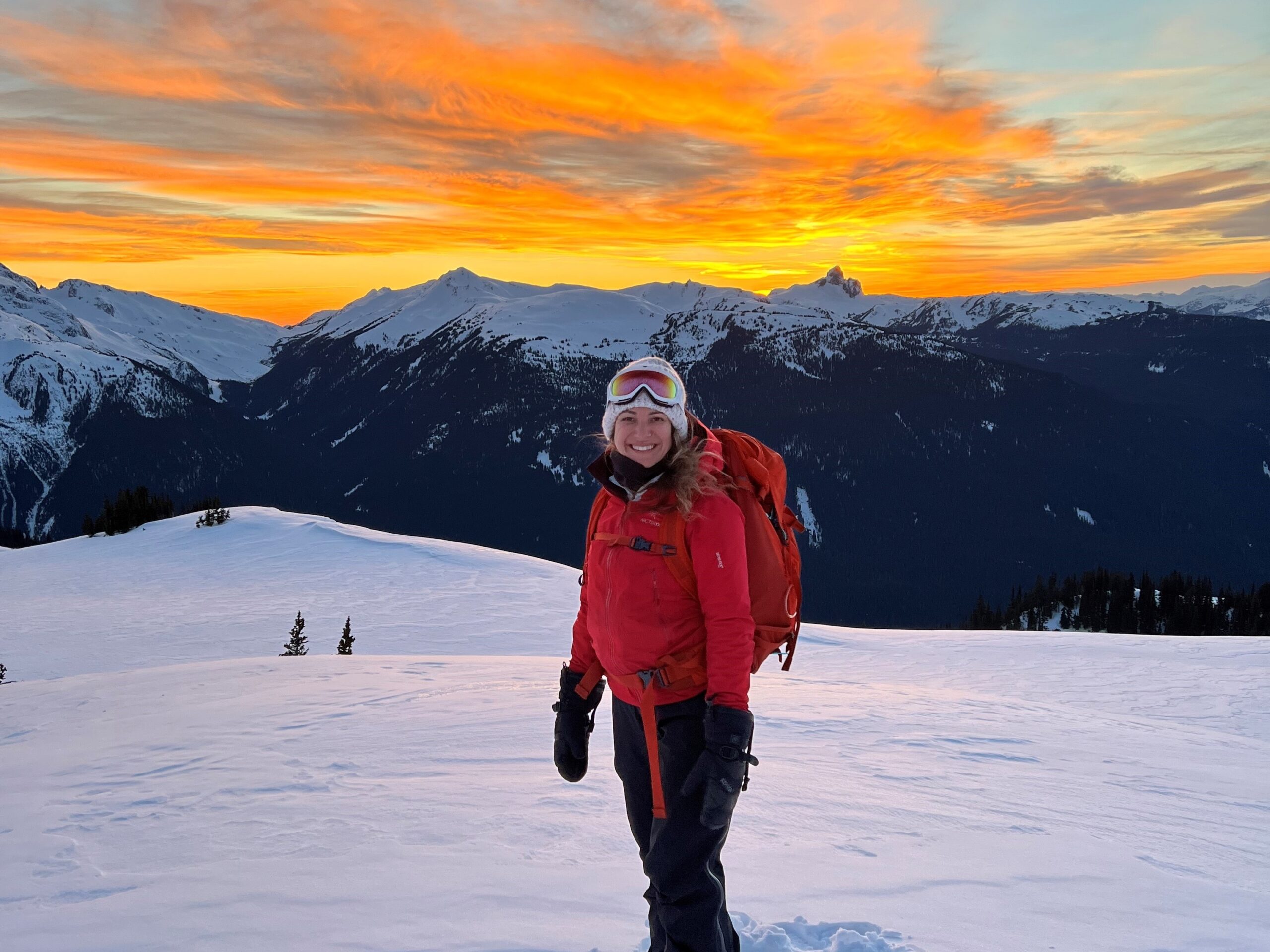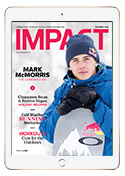There is nothing quite like being outside in nature with inches of snow under your feet, no matter your level of fitness. While you’re moving your body, enjoying the scenic views, crisp fresh air, and perhaps a conversation with a workout partner, you’re increasing your physical activity levels with lower levels of perceived exertion, altering physiological functioning, including stress reduction, restoring mental fatigue, improving mood and self-confidence. Whether you’re an avid trail runner awaiting races to get started back up, or a newcomer to running, now is the time to discover a new way to complement your running efforts by learning more about ways to incorporate workouts with microspikes, snowshoes, and ski touring!
What is the most important piece of all three options we’re going to explore? Safety. Always tell a reliable person where you are headed and when to expect you back. Leave them with a detailed trip itinerary, and make sure you know your route and plan accordingly. Trust that even the best weather can change quickly, and the most predictable trail can get you lost. Be familiar with always packing the ‘10 Essentials’ to bring along in any of the activities mentioned.
Microspikes
From local parks to valleys to high-altitude peaks, hiking is a great activity to build your cardiovascular endurance, and with microspikes, hiking is possible at this time of year. When slick icy surfaces present themselves in a mix of ice and snow, microspikes are mandatory for your safety. They keep you upright and enable you to move efficiently without risking a fall or injury. Microspikes are comprised of chains and small spikes that are slipped over your footwear for extra traction. Despite them sounding heavy, there are fantastic lightweight options available that take seconds to slip on and off. They are inexpensive, compact to bring along, and you’ll hardly even know you’re wearing them.
Snowshoeing
Snowshoeing is great fun, and research has shown it can burn anywhere from 500-1000 calories in an hour (be prepared to pack snacks and stay hydrated). Snowshoes are viewed by many as flotation over snow minus the traction, and as much as this is true, more recent models of snowshoes have come out with traction on the bottom and sides. I talk from experience because in recent seasons I have been guilty myself of using snowshoes on terrain that really required microspikes. Don’t do it, it’s frustrating, inefficient, and puts a pause on your workout. The best snowshoe conditions include trails that have several inches of fresh snow with short patches of hard-packed snow, and no ice. Snowshoeing will likely surprise you with the amount of sweat it can produce, so be sure to dress warmly in layers that include moisture wicking material in order to draw perspiration away from your body (this applies to all three activities mentioned in this article). As far as well-being, get ready to have your relationship with winter become more adventurous while strengthening your calf muscles, quads, and hamstrings on snowy cushion-like terrain that protects your knees and joints.
Ski touring
A personal favourite, ski touring – or splitboarding – is done in the backcountry, where you don’t have the aid of a chairlift to get you to a peak. With the aid of skins on the underside of your ski’s you can propel uphill (called ‘skinning’). The popularity of ski touring is growing, and whatever your reason to get involved you have to start with the basics. This activity isn’t simply about grabbing gear out of the closet, a lift ticket, and heading to the mountain. First and foremost it requires education. That means taking a course called Avalanche Safety Training (AST Level 1). In this typical two-day course you’ll be guided by professionals to learn the fundamentals critical to safe backcountry travel. Next, you’ll need the proper gear. This includes skis and poles, touring bindings, touring boots, skins, a backpack, transceiver, probe, shovel, and navigation. This may sound like a lot, but if you’re willing to put the time and effort in, the sport is an incredible complement to trail running in the winter.
So, embrace winter and enjoy the many activities that await you in the great outdoors.
10 Essentials
- Light – Flashlight or a headlamp with extra batteries (and light bulb if not LED). Green cyalume stick or small turtle lights as emergency backup.
- Whistle – is ideal for signalling for help as your voice will become very hoarse in a short period of time especially if you are dehydrated. Other signalling devices; bear bangers, pencil flare.
- Fire Starter – Matches (water proof or in plastic bag) or lighter, a commercial fire starter and/or a candle.
- Warm Clothes – Hat or toque, gloves or mittens, puffy jacket, Gore-tex jacket, polypro underwear, good quality hiking socks and Gore-tex over pants.
- Pocketknife – Although a multi tool is preferred, a good pocket knife with a quality blade will suffice.
- Shelter – Large orange plastic bag and thermal tarp.
- Water and Food – Electrolytes, bars, fruit, nuts. Water especially is an important essential item to take before and during your hike.
- First-Aid Kit – Should include pocket mask; Sam Splint, bulk dressings, protective gloves, bandage, scissors and blister dressings
- Navigation/Cell Phone – Good quality compass with built in declination adjustment and both topographical and interpretive maps, a GPS device and cell phone.
- Trip Plan Itinerary – Always tell a reliable person where you are going and when to expect you back. Make sure you know your route and plan accordingly.
IMPACT Magazine’s December 2020 Edition
Read about our top Canadian Olympic snowboarder who returned from injury and is chasing that elusive Olympic Gold! Learn how not to lose your momentum running through the cold and snow, work out with Canada’s Top Fitness Trainers, avoid back pain with one of the world’s most renowned experts and try out our delicious Holiday-themed recipes.


















